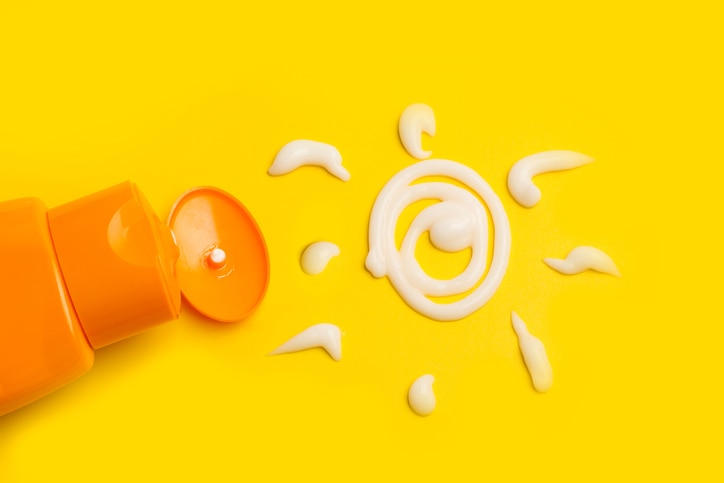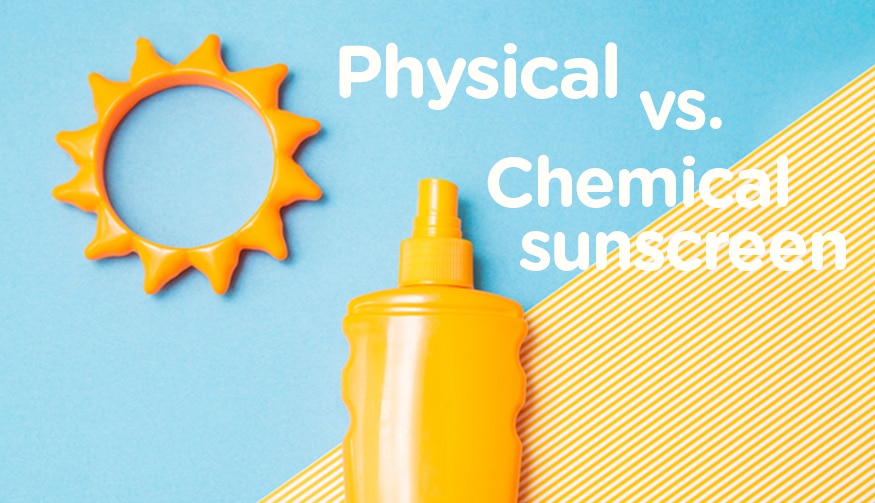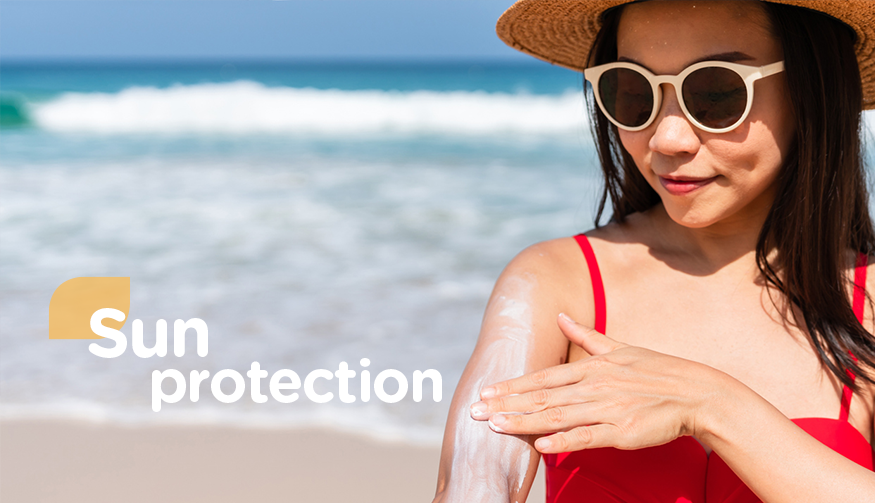Trying to find a sunscreen can be difficult. There are two types of sunscreen: physical and chemical. How do chemical and physical sunscreens protect the skin? Read on and get to know how they work and the difference between the two of them.

Physical Sunscreen
Physical sunscreens are formulated with active mineral ingredients, using either Zinc Oxide or Titanium Dioxide to create a barrier on the skin. They work by sitting on top of the skin to prevent UV rays from hitting the skin.
Pros:
- No wait needed for it to take effect
- Less likely to be pore-clogging
- Has a longer shelf life than chemical sunscreens
- Not absorbed to the skin
- Safe for use on babies & pregnant women
Cons:
- May leave a white cast on the skin
- Texture tends to be thicker
- Wear off more quickly

Chemical Sunscreen
As the name suggests, chemical sunscreens work by using chemical compounds such as oxybenzone, octinoxate, to absorb UV rays and change them into heat, which is then released and scattered by the skin.
Pros:
- Lightweight & non-greasy texture
- Wear off less quickly
Cons:
- Require up to 20 mins to take effect
- Chemical ingredients like oxybenzone and octinoxate pose a risk to coral reefs
- May cause irritation with the use of chemicals that are absorbed into the skin











